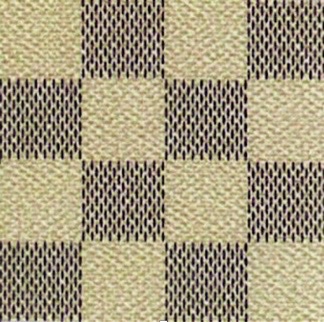19/10/2022 T-275/21, DEVICE OF A CHEQUERBOARD PATTERN (fig.), EU:T:2022:654

The French designer’s iconic fabric, one that is no stranger to catwalks and maison de couture around the world, has found itself in the courtroom, again, after a 5 year battle with the EUIPO.
The fashion conscious and lovers of luxury will surely be familiar with the pattern, which has been used for over 100 years, but the General Court of the EUIPO has rejected its claim of having acquired distinctiveness.
Acquired Distinctiveness
It is an established principle that a mark can acquire distinctiveness through use – allowing it to become registerable as a trade mark. To acquire such distinctiveness, the proprietor simply has to provide evidence that:
“at least a significant proportion of the relevant public identifies the goods or services concerned as originating from a particular undertaking, because of the mark”
In relation to the relevant territory, it is significant that the Court highlighted that, in the case of a mark that does not have inherent distinctive character, the acquired distinctiveness must be shown throughout the EU, and not only in a substantial part or the majority of the territory.
Here, the Court held that the evidence put forward by Louis Vuitton (“LV”) did not sufficiently prove that the pattern had acquired distinctiveness, and as such the mark was declared invalid.
The Evidence
The following forms of evidence were submitted by LV:
- Value and market shares of the brand;
- Information concerning the history of the contested mark;
- Sales invoices;
- Excepts from catalogues, advertising campaigns and media coverage of the contested mark;
- Statements on the distribution of magazines containing advertisements for goods in class 18 bearing the contested mark in the Member States concerned;
- Evidence on use of the contested mark on the internet;
- Expert statements asserting that a significant portion of EU consumers associate the contested mark with the applicant;
- Opinion polls which purportedly showed that a significant proportion of EU consumers associates the contested mark with the applicant;
- Evidence concerning infringement proceedings, which again purportedly showed that a significant proportion of EU consumers associates the contested mark with the applicant.
This evidence was sufficient to persuade the Court that the mark has acquired distinctiveness in a number of EU countries. However, the crux of the matter boiled down to consumer awareness in Eastern Europe, namely Bulgaria, Estonia, Lithuania, Latvia, Slovakia and Slovenia, together with Malta, in particular as LV does not have any physical stores in these territories. Evidence was submitted that there were, albeit a small number of, sales in these countries, and advertisements and magazines were available in these territories. However, the level of awareness was nonetheless low.
The Decision
In consideration of the level of awareness in Eastern Europe, the Court considered that LV had not demonstrated to the requisite standard that it had acquired distinctiveness in these nations. Therefore, as the relevant territory is the whole of the EU and LV had failed to show recognition in the whole of the EU, the Court held that the mark does not have acquired distinctiveness. This is in accordance with the earlier decision of the Board of Appeal.
Comment
This case is notable for those who wish to protect more unusual trade marks and highlights the EUIPO’s stringent approach to evidential burdens. Unusual marks are difficult to protect, and, even for iconic brands such as Louis Vuitton, the evidence requirements are very high.
The current approach in the UK is that, for a mark such as this, even with very significant use, it might be difficult to obtain protection unless you can show that consumers recognise the mark as a brand, rather than just forming an association with the applicant. LV were able to establish that they have educated the public in areas of the EU, but they weren’t able to evidence this in all nations of the Union. There is therefore a marked difference in the requirements for obtaining a UK trade mark as opposed to an EU trade mark on grounds of acquired distinctiveness. By nature of the unitary EU system, if the mark is not distinctive in the whole of the Union, you will fail to register the trade mark at all.
This forms a cautionary tale for brand owners operating in the EU. Acquired distinctiveness for the purposes of obtaining an EU trade mark must be evidenced throughout the markets in each of the EU countries. If brand recognition can only be proven in a select range of countries, brand owners might be better advised to seek protection either at a National level, or using an International Registration with individual designations in the brand’s key territories.
_____________________________
To make sure you do not miss out on regular updates from the Kluwer Trademark Blog, please subscribe here.


